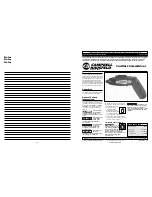
Page 71
EPS Stromversorgung GmbH
Alter Postweg 101 • 86159 Augsburg
Germany
Fon: +49 821 / 570451-0
Fax: +49 821 / 570451-25
www.eps-germany.de
PSI 10000 4U Serie
3.10.5
Sine wave function
The following parameters can be configured for a sine wave function:
Parameter
Range
Description
Frequency (f) 1...10000 Hz
Static frequency of the signal to be generated
Amplitude (A) 0...(Nominal value - O) of U, I
Amplitude of the signal to be generated
Offset (O)
A...(Nominal value - A) of U, I
Offset, based on the zero point of the mathematical sine curve,
may not be smaller than the amplitude.
Schematic diagram:
Application and result:
Offset
Am
plitud
e
t
U,I
f
Am
plitud
e
A normal sine wave signal is generated and applied to
the selected set value, e.g. voltage (U). At a constant
load resistance, the output voltage and thus also the
output current will follow a sine wave.
For calculating the maximum power output the amplitude
and offset values for the current have to be added.
Example: an output voltage of 100 V is set together with
sin(I) with an amplitude of 30 A and an offset of 50 A.
The resulting maximum power output is then achieved
at the highest point of the sine wave and is (30 A + 50 A)
* 100 V = 8000 W.
It means, the global power limit would have to be set
to at least 8000 W in order to achieve a function run as
expected.
3.10.6
Triangular function
The following parameters can be configured for a triangular wave function:
Parameter
Range
Description
Amplitude (A) 0...(Nominal value - O) of U, I
Amplitude of the signal to be generated
Offset (O)
0...(Nominal value - A) of U, I
Offset, based on the foot of the triangular wave
Time t1
0.1 ms...36,000,000 ms
Rising edge time Δt of the triangular wave signal
Time t2
0.1 ms...36,000,000 ms
Falling edge time Δt of the triangular wave signal
Schematic diagram:
Application and result:
O
ffset
t
U,I
A
m
plit
ud
e
t1
t2
A triangular wave signal for output current (only effec
-
tive in current limiting) or output voltage is generated.
The positive and negative slope times can be set inde-
pendently.
The offset shifts the signal on the Y-axis.
The sum of the intervals t1 and t2 gives the cycle time
and its reciprocal is the frequency.
Example: a frequency of 10 Hz is required and would
lead to periodic duration of 100 ms. This 100 ms can
be freely allocated to t1 and t2, e.g. 50 ms:50 ms (isos
-
celes triangle) or 99.9 ms:0.1 ms (right-angled triangle
or sawtooth).
















































